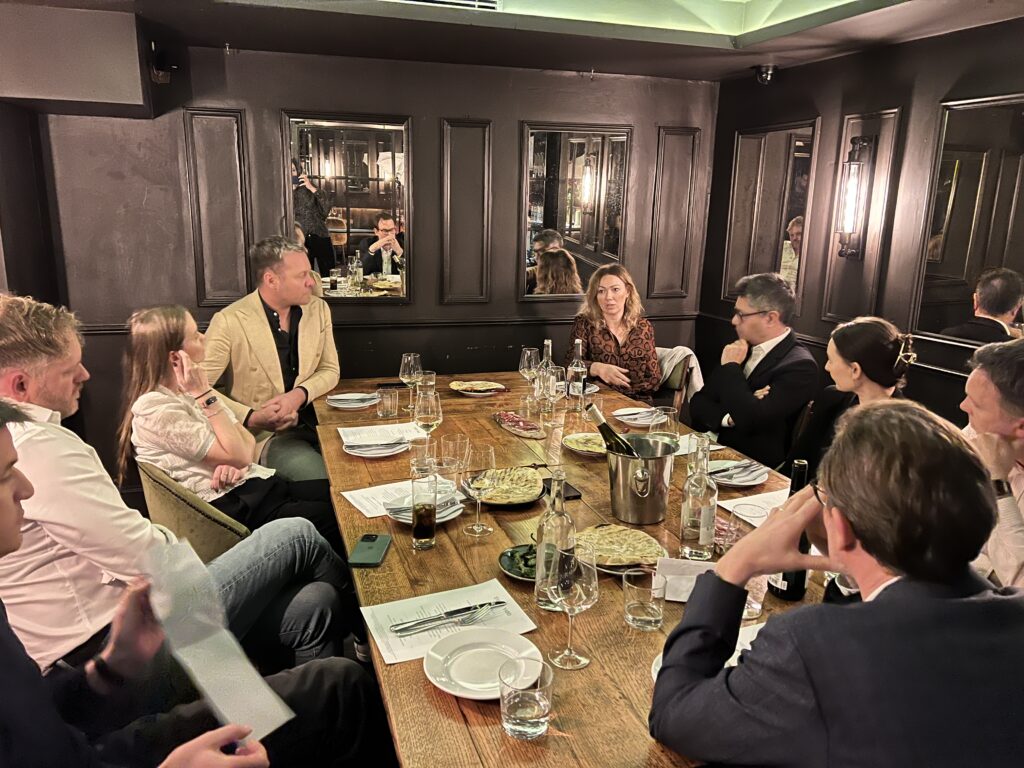What are the key challenges for advertisers in the Connected TV (CTV) space in 2023? With a variety of new players entering the ad sales marketplace and Free Ad-Supported TV (FAST) channels becoming more popular than ever with viewers, how can marketers keep up?
New Digital Age, in association with Mediarithmics, recently hosted a roundtable discussion to explore the rapidly evolving CTV marketplace. NDA editor Justin Pearse chaired the conversation and was joined by Phil Raby, General Manager International, and Gille Chetelat, CEO, of Mediarithmics; Lottie Towler, Research Manager, Ampere Analysis, Mike Shaw, Head of International Ad Sales at Roku; Charlie Glyn, Ad Technology Leader at Channel 4 Sales; Andy Jones, Head of UK Sales, Samsung Ads; Rachael Philpot, Business Director, Vevo UK & International; and Ian van Der Putten, European Marketing Director and Business Development, OUTtv.
Providing an overview of broad trends in the ad marketplace, research specialist Towler commented: “The general perception of streaming has shifted in the past year from having a subscription-led focus to being much more focused on advertising. In 2021, we reached an inflection point where online video advertising overtook traditional TV for the first time. Traditional TV advertising revenues are pretty flat, while total advertising spend is growing, with spending being transferred from both traditional TV and online display towards addressable video and CTV. We estimate that, globally, ‘addressable’ accounts for less than 10% of all advertising spend, so that’s still quite a small portion, but it’s growing.”
So what factors are holding back the adoption of CTV at the moment? Phil Raby of Mediarithmics offered his take from a “pipes and infrastructure” perspective: “There’s a huge amount of data that comes from CTV and broadcasters, which is exciting and very different to what we’ve seen from traditional media players, but the data is still fairly fragmented across lots of different apps and different platforms. That’s the use case that we solve for broadcasters and CTV players, helping to make their data more relevant and readily available downstream for activation.”
Channel 4’s Glyn agreed that fragmentation remains an issue. She said: “From an advertiser perspective, the CTV ad market is fragmented for many different reasons but the end user, the viewer, doesn’t care about that. It’s our responsibility as broadcasters and ad platforms to make it as easy as possible for brands to leverage the innovation and opportunity that comes from TV ads being delivered over an IP connection. That’s the general direction of travel in the industry, so there’s general agreement that making CTV advertising easier to trade and easier to measure should be a top priority.”
Glyn added: “We have 20 million registered users at All4 so we’re also exploring how our first-party data can be used as an insight tool for brands as well as an activation tool.”

Shake it up
Philpot of music video network Vevo took a different viewpoint on the fragmentation of the industry, encouraging advertisers to view the diverse marketplace as an opportunity to shake things up and experiment with different platforms and audiences.
“The questions of fragmentation and scale in CTV are often seen as bigger, scarier issues than they actually are. People ask ‘How will this work within a cohesive TV campaign plan?’ but fragmentation can be an asset. The reality is that a few direct relationships with premium media owners can deliver real value to advertisers. We reach 12 million users on a monthly basis so I don’t think scale is an issue either.
“Globally, we’ve launched more than 60 new FAST channels in 2022 alone, with plans for many more. Catering to our audience and positioning our content wherever they want to watch it is going to be absolutely key to our future success.”
van Der Putten of LGBT focused broadcaster OUTtv spoke of how his organisation is helping advertisers to explore the value of reaching smaller, targeted audiences via CTV. He said: “In the past, in terms of showing support for the LGBTcommunity, brands would maybe change their logo to rainbow colours for Pride month. Today, many brands are being compelled to invest a set portion of their budgets in more diverse and inclusive channels. We’re expanding our TV offering globally all the time and attracting more ad spending, despite our CPM being higher than average. We are addressing a niche market by design and have great data-rich relationships with our audience as a result. That opens up new opportunities for advertisers who aren’t primarily focused on scale.”
Samsung Ad’s Andy Jones also questioned whether ‘scale’ is still a factor slowing the uptake of CTV advertising and pointed, instead, to the internal workings of agencies themselves: “Who takes ownership of CTV inside an agency? Digital teams have been quicker to embrace it, but AV teams have started to lean in a lot more this year. One big reason for more budget not flowing into CTV is that the central trading mechanisms the agencies rely on are often tied into broadcast deals. That said, the whole marketplace is evolving very rapidly.
“A massive advance that we made last year was the launch of our Consent Management Platform (CMP). We now have consent in place across the vast majority of our devices across the UK and Europe to share anonymous IDs with third-party advertisers and measurement vendors. We have a partnership in place with Xperian that means we can measure around 1000 different data points on our devices.”
Shaw of Roku noted that the continuous evolution of the industry is largely driven by advertiser demands and, on that basis, CTV is well-positioned to grow in importance.
He said: “From a data and measurement perspective, there’s so much more that CTV can deliver in terms of supporting planning, activation and assessing performance. Samsung, for example, has already deployed a massive ACR data set that gives planners the flexibility to only target incremental reach.
“There are some amazing content offerings and platforms around this table. The premium nature of our services isn’t something that a media buyer would be questioning. It’s more about the logistics of getting that money spent. The onus is on us as platforms, service providers and broadcasters to be as open as possible in terms of the data we share and to create the industry standards and norms needed to let the money flow.”
Read Part 2 of this roundtable recap here.









